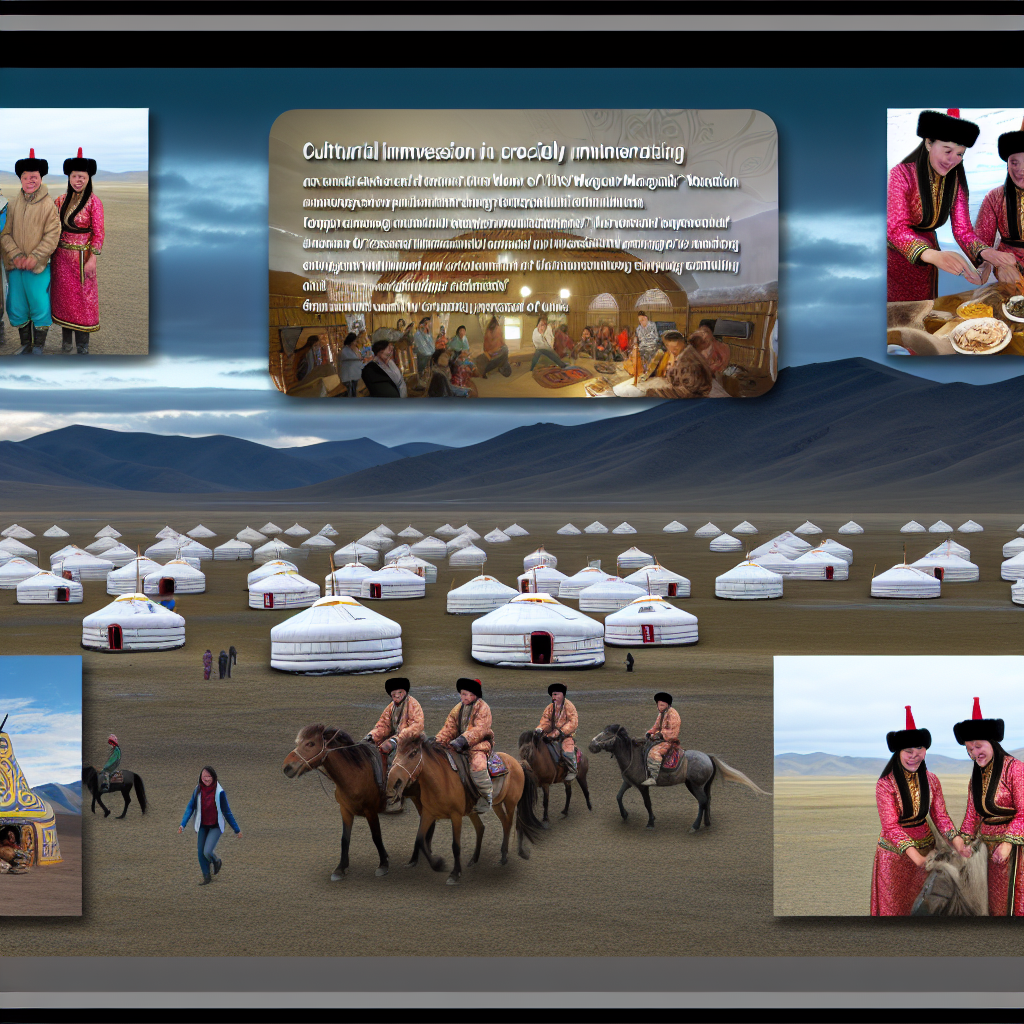Mongolia Launches ‘Nomadic Experience’ Tourism Circuit for Authentic Cultural Immersion
Mongolia, a land renowned for its vast steppes, rugged mountains, and rich nomadic heritage, has recently unveiled an innovative tourism initiative called the “Nomadic Experience” circuit. This new program aims to offer travelers an authentic and immersive journey into the traditional lifestyle of Mongolia’s nomadic communities. By blending cultural education with adventure tourism, the initiative seeks to boost sustainable tourism while preserving the country’s unique heritage.
Reviving the Spirit of Nomadic Life
The “Nomadic Experience” circuit is designed to provide visitors with a firsthand understanding of Mongolia’s centuries-old nomadic traditions. Unlike conventional tours that focus primarily on sightseeing, this circuit emphasizes active participation in daily nomadic activities such as herding livestock, setting up and living in traditional gers (yurts), and experiencing local festivals.
According to the Mongolian Ministry of Environment and Tourism, the program is expected to increase rural tourism by 30% over the next three years, providing much-needed economic support to remote communities. This initiative also aligns with Mongolia’s broader strategy to promote eco-friendly and culturally respectful tourism.
Key Features of the ‘Nomadic Experience’ Circuit
- Authentic Ger Stays: Visitors stay in traditional felt yurts, gaining insight into the architecture and lifestyle that have sustained nomads for generations.
- Hands-On Herding: Tourists join local herders in managing livestock such as horses, sheep, and camels, learning about animal husbandry and seasonal migration patterns.
- Cultural Workshops: Activities include traditional crafts like felt-making, throat singing (khöömei), and archery, offering a deep dive into Mongolian arts.
- Local Cuisine: Guests enjoy meals prepared with locally sourced ingredients, including dairy products, mutton, and traditional beverages like airag (fermented mare’s milk).
- Festival Participation: The circuit is timed to coincide with major cultural events such as Naadam, where visitors can witness wrestling, horse racing, and archery competitions.
Case Study: The Orkhon Valley Nomadic Community
One of the pilot sites for the “Nomadic Experience” circuit is the Orkhon Valley, a UNESCO World Heritage site known for its historical significance and natural beauty. Here, tourists live alongside families who have maintained nomadic traditions for centuries. The valley’s community-based tourism model has already demonstrated positive outcomes, including a 25% increase in household income and improved infrastructure funded by tourism revenues.
Visitors to the Orkhon Valley report high satisfaction rates, with 87% stating that the experience deepened their appreciation for Mongolian culture and environment. This success has encouraged the government to expand the circuit to other regions such as the Gobi Desert and Khuvsgul Lake area.
Benefits of the ‘Nomadic Experience’ Circuit
- Economic Empowerment: By directing tourism revenue to local families, the program helps reduce rural poverty and discourages urban migration.
- Cultural Preservation: Engaging tourists in traditional practices fosters pride among nomads and incentivizes the continuation of their heritage.
- Environmental Sustainability: The circuit promotes low-impact travel, encouraging respect for Mongolia’s fragile ecosystems.
- Educational Value: Visitors gain a nuanced understanding of nomadic life, challenging stereotypes and promoting cross-cultural dialogue.
Challenges and Future Prospects
Despite its promising start, the “Nomadic Experience” circuit faces challenges such as infrastructure limitations, language barriers, and the need for ongoing training of local guides. The Mongolian government is collaborating with international organizations to address these issues by investing in capacity building and digital marketing to reach a global audience.
Looking ahead, the program aims to integrate technology, such as virtual reality previews and mobile apps, to enhance visitor engagement and accessibility. Additionally, there are plans to develop specialized circuits focusing on wildlife conservation and winter nomadic traditions.
Conclusion
The launch of Mongolia’s “Nomadic Experience” tourism circuit marks a significant step toward sustainable and culturally immersive travel. By offering authentic encounters with nomadic life, the initiative not only enriches the visitor experience but also supports the preservation of Mongolia’s unique heritage and environment. As the program expands, it holds the potential to transform Mongolia into a leading destination for responsible tourism, fostering economic growth and cultural pride in its rural communities.





